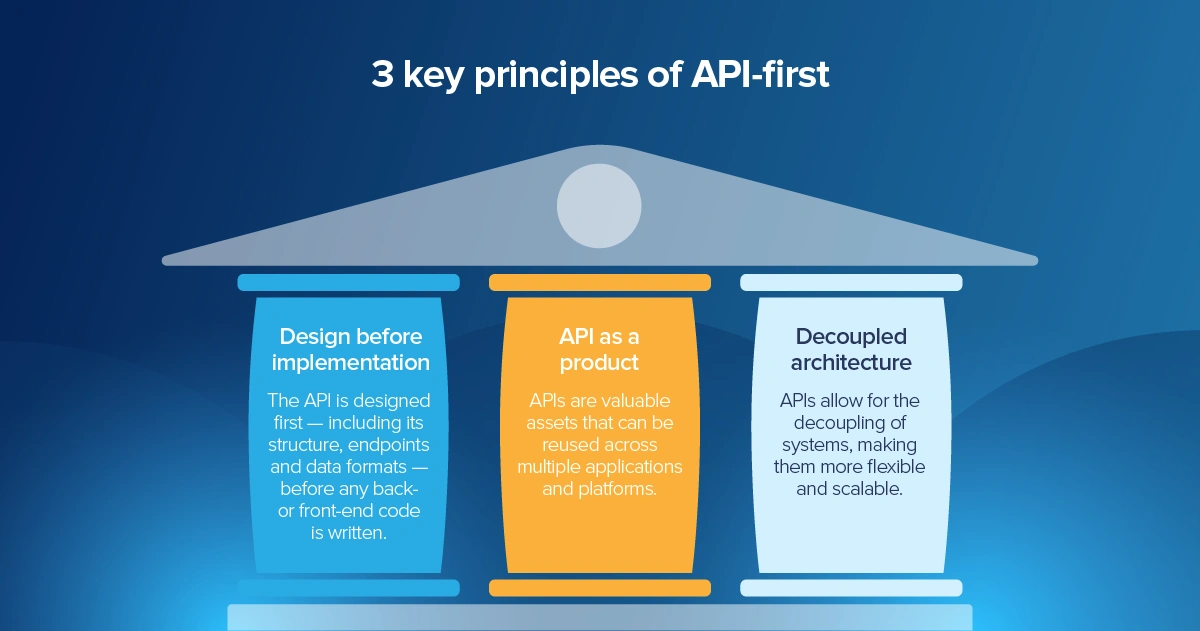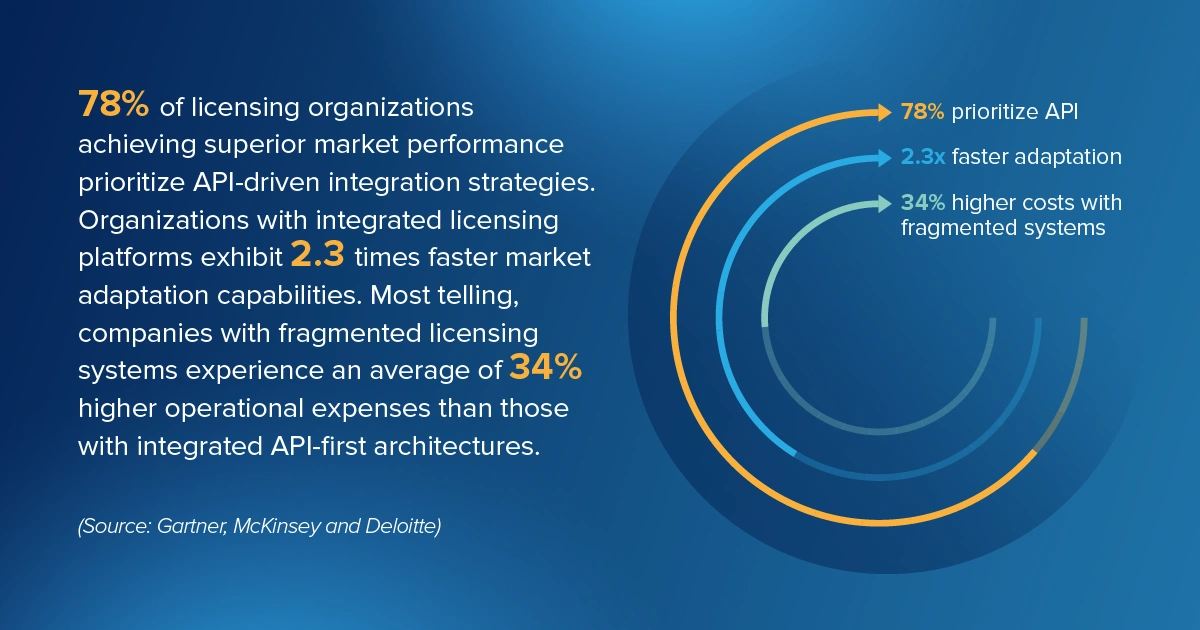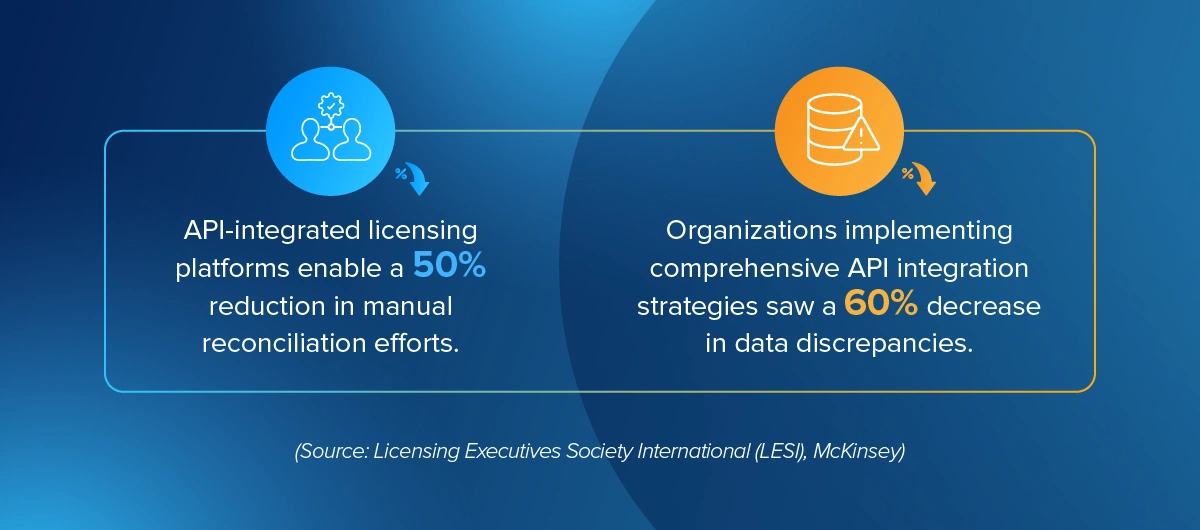
How API-integrated licensing platforms elevate your intellectual property management
Are fragmented, outdated and disconnected tools and software making your licensing operations hemorrhage money? It’s time to actively manage your intellectual property (IP) empire instead of watching financial catastrophe unfold in slow motion.
As your portfolio of IP assets expands and your partnership network grows, the legacy tools and solutions meant to manage this ecosystem remain trapped in disconnected silos. The result is devastating but predictable: Instead of creating value, your talented teams are mired in bureaucracy, manually reconciling data across systems that should be talking to each other and hunting down errors that shouldn’t exist.
Every delayed licensing negotiation, miscalculated royalty payment and missed market opportunity stems from this technological fragmentation, and the competitive disadvantage compounds daily.
I believe a fundamental reimagining of how your technology operates is needed. The most forward-thinking organizations have discovered that seamless integration is a strategic imperative. Cue API-first architecture to enter stage right.
With API-first architecture, the API’s (application programming interface) design and documentation come before writing any application code. This design-led approach highlights the API as the primary interface for functionality to provide internal and external developers with a well-organized and consistent experience.
All industries want their information to be concise, helpful, accurate and digestible in a transparent and usable format. The methodology to produce that is API-first, regardless of the actual data points being architected.
Code-in-the-mode challenge
The most significant challenge you will face when transitioning to an API-first architecture is what I call “code-in-the-mode,” where the API is an afterthought until the core application is in place. API-first reverses this paradigm, prioritizing the API as the primary interface for system functionality, delivering a more scalable solution that puts meaningful data in front of users faster.
Software teams often maintain current practices because they resist architectural inconsistency within one infrastructure. Sometimes, consistency is simply the path of least resistance, even when that path leads to continued inefficiency.
Going beyond the band-aid
The evolution of digital integration strategies has culminated in API-first architectures — a reimagining of how licensing technology ecosystems operate. From my perspective, this isn’t merely connecting existing systems; it’s creating a new technological framework built on seamless communication, real-time data exchange and unified intelligence.
The transition to API-first integration delivers 5 measurable benefits:
- Improved scalability and flexibility
Easier integration of new services and technologies allows systems to scale up or down as needed.
- Faster time to market
Your teams can begin building applications and services more quickly.
- Reduced developmental and operational costs
Identify and address potential issues early in development, reducing costly refactoring later. You can direct valuable resources toward strategic initiatives by eliminating redundant manual processes and minimizing error correction time and system maintenance complexity.
- Productivity transformation
Significant reduction in manual reconciliation translates to substantial productivity gains. It’s more than saving time; it’s redeploying talent from administrative data management to high-value strategic activities.
- Error mitigation
Reduced errors mean more accurate financial reporting, improved compliance and increased stakeholder confidence. Enhanced data accuracy supports better decision-making and minimizes legal and economic risks associated with incorrect licensing information.
I believe the strategic advantages of API-first integration extend far beyond immediate efficiency gains. Enhanced partner trust, accelerated market responsiveness, data-driven strategic decision-making and ironclad compliance and audit trails become competitive differentiators.
From handcuffs to wings
API-first architecture frees people from administrative drudgery and empowers them to innovate, strategize and create.
The change ripples through your entire organization. Your finance team gains real-time visibility into licensing revenue streams. Your legal team accesses comprehensive rights information instantly. Your business development team accelerates partnership negotiations with complete, accurate data at their fingertips.
Fortunately, you can build a compelling business case and quantify the return on investment for API-first integration. Currently, executives and decision-makers use multiple disparate tools and applications to gather data, then hone their Excel skills to arrive at an amalgamated set of meaningful data. The amalgamation of data is the initial goal, not a secondary thought or unachievable mandate.
Regarding specific features and capabilities to prioritize when selecting an API management platform for your licensing ecosystem, core-level reporting and analytics are essential. Any decent software solution can process loads of data and handle complexities and nuances. Still, its purpose is missing if it can’t show results digestibly to the end user. Reporting and analytics are common afterthoughts because there is no API-first mentality resetting the order of events with the actual result in mind at the start.
Stop leaking, start leading
That 34% higher operational expense represents a third of your operational budget evaporating due to technological fragmentation. I believe it also represents delayed market opportunities, strained partner relationships, missed revenue opportunities and talented team members trapped in low-value administrative tasks.
Data is just data, but insight is powerful and valuable. Without a data-driven plan to produce insight, such as via API-first architecture, you could end up with giant databases and no way to use them.
As licensing portfolios grow increasingly complex with multi-tier royalty structures and cross-border rights management, implementing API-first anticipates tomorrow’s challenges. Industry leaders are already moving beyond basic system integration toward predictive analytics and dynamic rights monetization. By establishing an API-first foundation now, you’re fixing broken processes and positioning your organization to quickly capitalize on emerging revenue streams that competitors with fragmented systems will be too slow to capture.
You can continue watching a third of your operational budget leak away through fragmented systems or embrace an architecture that turns technological complexity into a decisive strategic advantage.
Get the latest news, updates, and exclusive insights from Vistex delivered straight to your inbox. Don’t miss out—opt in now and be the first to know!





